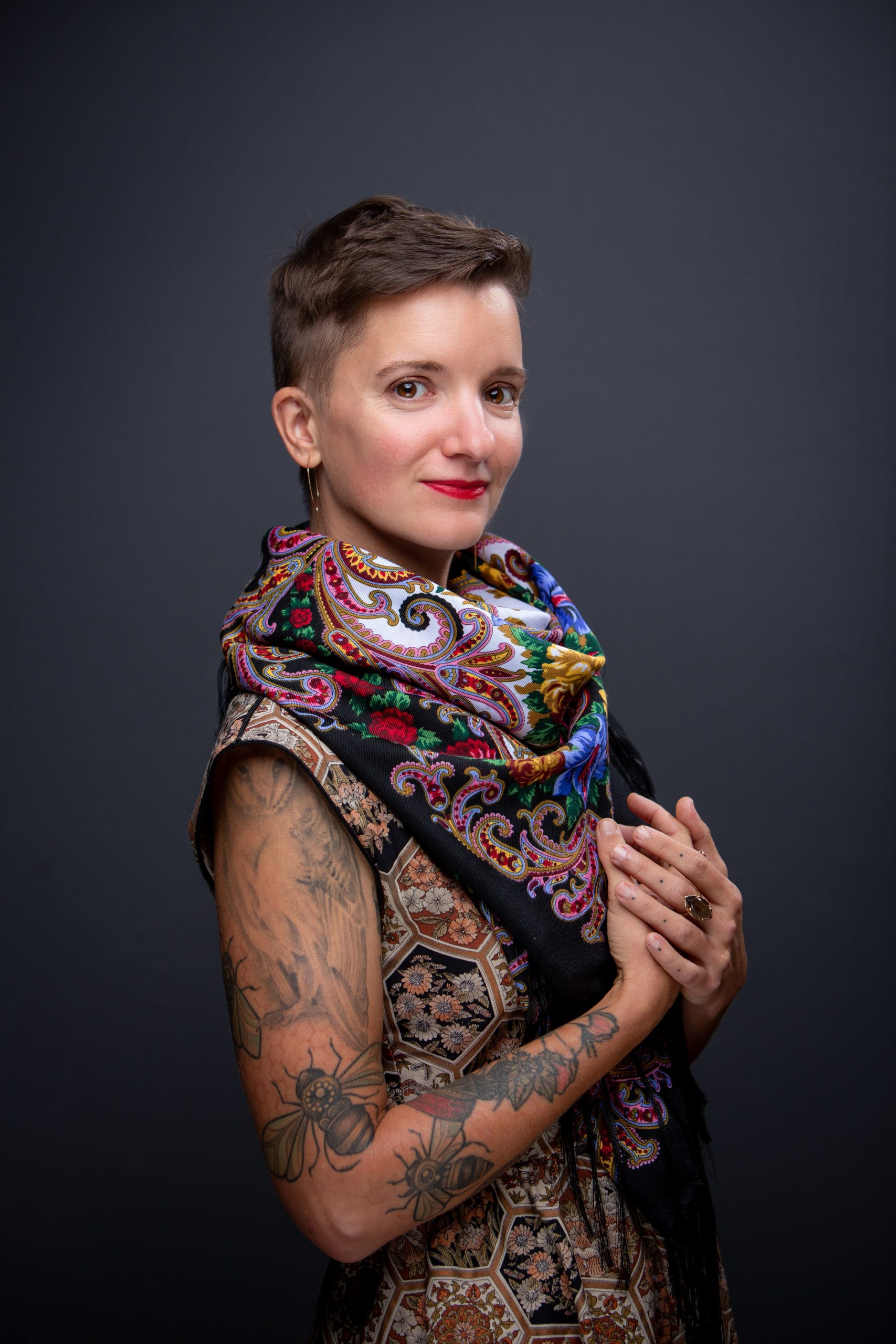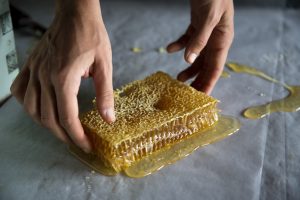About the Author
- Page ID
- 29073
\( \newcommand{\vecs}[1]{\overset { \scriptstyle \rightharpoonup} {\mathbf{#1}} } \)
\( \newcommand{\vecd}[1]{\overset{-\!-\!\rightharpoonup}{\vphantom{a}\smash {#1}}} \)
\( \newcommand{\dsum}{\displaystyle\sum\limits} \)
\( \newcommand{\dint}{\displaystyle\int\limits} \)
\( \newcommand{\dlim}{\displaystyle\lim\limits} \)
\( \newcommand{\id}{\mathrm{id}}\) \( \newcommand{\Span}{\mathrm{span}}\)
( \newcommand{\kernel}{\mathrm{null}\,}\) \( \newcommand{\range}{\mathrm{range}\,}\)
\( \newcommand{\RealPart}{\mathrm{Re}}\) \( \newcommand{\ImaginaryPart}{\mathrm{Im}}\)
\( \newcommand{\Argument}{\mathrm{Arg}}\) \( \newcommand{\norm}[1]{\| #1 \|}\)
\( \newcommand{\inner}[2]{\langle #1, #2 \rangle}\)
\( \newcommand{\Span}{\mathrm{span}}\)
\( \newcommand{\id}{\mathrm{id}}\)
\( \newcommand{\Span}{\mathrm{span}}\)
\( \newcommand{\kernel}{\mathrm{null}\,}\)
\( \newcommand{\range}{\mathrm{range}\,}\)
\( \newcommand{\RealPart}{\mathrm{Re}}\)
\( \newcommand{\ImaginaryPart}{\mathrm{Im}}\)
\( \newcommand{\Argument}{\mathrm{Arg}}\)
\( \newcommand{\norm}[1]{\| #1 \|}\)
\( \newcommand{\inner}[2]{\langle #1, #2 \rangle}\)
\( \newcommand{\Span}{\mathrm{span}}\) \( \newcommand{\AA}{\unicode[.8,0]{x212B}}\)
\( \newcommand{\vectorA}[1]{\vec{#1}} % arrow\)
\( \newcommand{\vectorAt}[1]{\vec{\text{#1}}} % arrow\)
\( \newcommand{\vectorB}[1]{\overset { \scriptstyle \rightharpoonup} {\mathbf{#1}} } \)
\( \newcommand{\vectorC}[1]{\textbf{#1}} \)
\( \newcommand{\vectorD}[1]{\overrightarrow{#1}} \)
\( \newcommand{\vectorDt}[1]{\overrightarrow{\text{#1}}} \)
\( \newcommand{\vectE}[1]{\overset{-\!-\!\rightharpoonup}{\vphantom{a}\smash{\mathbf {#1}}}} \)
\( \newcommand{\vecs}[1]{\overset { \scriptstyle \rightharpoonup} {\mathbf{#1}} } \)
\( \newcommand{\vecd}[1]{\overset{-\!-\!\rightharpoonup}{\vphantom{a}\smash {#1}}} \)
\(\newcommand{\avec}{\mathbf a}\) \(\newcommand{\bvec}{\mathbf b}\) \(\newcommand{\cvec}{\mathbf c}\) \(\newcommand{\dvec}{\mathbf d}\) \(\newcommand{\dtil}{\widetilde{\mathbf d}}\) \(\newcommand{\evec}{\mathbf e}\) \(\newcommand{\fvec}{\mathbf f}\) \(\newcommand{\nvec}{\mathbf n}\) \(\newcommand{\pvec}{\mathbf p}\) \(\newcommand{\qvec}{\mathbf q}\) \(\newcommand{\svec}{\mathbf s}\) \(\newcommand{\tvec}{\mathbf t}\) \(\newcommand{\uvec}{\mathbf u}\) \(\newcommand{\vvec}{\mathbf v}\) \(\newcommand{\wvec}{\mathbf w}\) \(\newcommand{\xvec}{\mathbf x}\) \(\newcommand{\yvec}{\mathbf y}\) \(\newcommand{\zvec}{\mathbf z}\) \(\newcommand{\rvec}{\mathbf r}\) \(\newcommand{\mvec}{\mathbf m}\) \(\newcommand{\zerovec}{\mathbf 0}\) \(\newcommand{\onevec}{\mathbf 1}\) \(\newcommand{\real}{\mathbb R}\) \(\newcommand{\twovec}[2]{\left[\begin{array}{r}#1 \\ #2 \end{array}\right]}\) \(\newcommand{\ctwovec}[2]{\left[\begin{array}{c}#1 \\ #2 \end{array}\right]}\) \(\newcommand{\threevec}[3]{\left[\begin{array}{r}#1 \\ #2 \\ #3 \end{array}\right]}\) \(\newcommand{\cthreevec}[3]{\left[\begin{array}{c}#1 \\ #2 \\ #3 \end{array}\right]}\) \(\newcommand{\fourvec}[4]{\left[\begin{array}{r}#1 \\ #2 \\ #3 \\ #4 \end{array}\right]}\) \(\newcommand{\cfourvec}[4]{\left[\begin{array}{c}#1 \\ #2 \\ #3 \\ #4 \end{array}\right]}\) \(\newcommand{\fivevec}[5]{\left[\begin{array}{r}#1 \\ #2 \\ #3 \\ #4 \\ #5 \\ \end{array}\right]}\) \(\newcommand{\cfivevec}[5]{\left[\begin{array}{c}#1 \\ #2 \\ #3 \\ #4 \\ #5 \\ \end{array}\right]}\) \(\newcommand{\mattwo}[4]{\left[\begin{array}{rr}#1 \amp #2 \\ #3 \amp #4 \\ \end{array}\right]}\) \(\newcommand{\laspan}[1]{\text{Span}\{#1\}}\) \(\newcommand{\bcal}{\cal B}\) \(\newcommand{\ccal}{\cal C}\) \(\newcommand{\scal}{\cal S}\) \(\newcommand{\wcal}{\cal W}\) \(\newcommand{\ecal}{\cal E}\) \(\newcommand{\coords}[2]{\left\{#1\right\}_{#2}}\) \(\newcommand{\gray}[1]{\color{gray}{#1}}\) \(\newcommand{\lgray}[1]{\color{lightgray}{#1}}\) \(\newcommand{\rank}{\operatorname{rank}}\) \(\newcommand{\row}{\text{Row}}\) \(\newcommand{\col}{\text{Col}}\) \(\renewcommand{\row}{\text{Row}}\) \(\newcommand{\nul}{\text{Nul}}\) \(\newcommand{\var}{\text{Var}}\) \(\newcommand{\corr}{\text{corr}}\) \(\newcommand{\len}[1]{\left|#1\right|}\) \(\newcommand{\bbar}{\overline{\bvec}}\) \(\newcommand{\bhat}{\widehat{\bvec}}\) \(\newcommand{\bperp}{\bvec^\perp}\) \(\newcommand{\xhat}{\widehat{\xvec}}\) \(\newcommand{\vhat}{\widehat{\vvec}}\) \(\newcommand{\uhat}{\widehat{\uvec}}\) \(\newcommand{\what}{\widehat{\wvec}}\) \(\newcommand{\Sighat}{\widehat{\Sigma}}\) \(\newcommand{\lt}{<}\) \(\newcommand{\gt}{>}\) \(\newcommand{\amp}{&}\) \(\definecolor{fillinmathshade}{gray}{0.9}\)
A Brief History of Me
I think to understand where we are and how our intersecting identities impact our experience, we have to be willing to take a critical lens to ourselves and our shared history, so we can discover the layered complexity of ourselves and our shared experience. To frame the context of this text, I think it’s important to understand what my perspective is. I write from the perspective of a person born and raised in the so-called United States. I am a white person, of Ukrainian and German heritage predominantly and hold Portuguese, French and Irish heritage. I am a nonbinary person. I use they/them/theirs pronouns. I am a queer pansexual person full of abundant love in many forms.
I am a descendant of wage workers. Because of this, workers’ movements rooted in collaborative resistance have always been compelling to me. A strong work ethic was instilled in me from my working lineage. At the same time, I bore witness to worker “burnout” and workers pitted against each other to benefit the extractive bosses, companies and the capitalist system. Though I was raised working class, I was able to save money and attend both college and graduate school, earning educational privilege in the process. That privilege gave me permission to question the relationship between workers and the system in which they work. It instilled in me an aspiration to run my own business, built on my values. That led me on a journey of exploration and self discovery. The work journey took me across oceans on solar powered sail boats, into kitchens, bars and classrooms and onto farms as I worked for small businesses across the US and the world. On that journey, I discovered what my values are and how I can align them with my work in the world.
Today I live in a community very different than the one I grew up in, but this community is similar to communities my great-grandparents were a part of when they migrated to this country. I currently experience the privilege of being partnered with someone who holds intergenerational wealth and middle-class privilege. I don’t have the privilege of emotional connection to my own family.
I do come from a lineage of women who have intuitive dreams and/or visions. I have these dreams/visions. These dreams inform and define how I make decisions in the world.
My Journey: Where I come from and how I got here
I was raised in Queens, New York in a small apartment in a part of Flushing called College Point. The first farm animal I saw was a sweet old spotted dairy cow on a class field trip at the Queens Zoo. I was so excited to see this magnificent creature. I stood behind her as close as I could get — and she shit all over me. I had to walk around for the remainder of the field trip covered in cow shit. It didn’t deter me from my love of animals and my desire to engage in animal husbandry. I pored over books and media about wild and domestic animals. I worked at that same Queens Zoo as a teen, and I kept the fire burning for a deep connection with the natural world.

My ancestors were Ukrainian, but they would describe themselves as Slavic. They came from people who lived in what is present day Ukraine. But poverty, forced migration and war tore their homeland apart. Slavic people hold a deep relationship with honey bees. The traditions and territories of beekeeping in Slavic culture is passed down from generation to generation.
As a young child, I had the privilege of a deep relationship with my Ukrainian great grandfather and his daughter, my grandmother. They taught me about dream divination and fed my fiery spirit with stories of Slavic people — bees were a consistent theme in these stories.
My grandmother, Constance Marie, who I affectionately called Connie, sparked my love of food, ritual and the natural world. She used food to bridge her Ukrainian traditions with the Italian, French and contemporary “American” cooking she learned from her friends in the United States. She spent hours in her kitchen crafting recipes that married her own traditions with those of the French and Italian chefs she admired. She shared these practices along with a side of Ukrainian folklore and mysticism.
As a Ukrainian transplant living in New York City, Connie raised rabbits on rooftops, holding on to her agrarian roots. Animal husbandry was her connection to the mystical traditions of her people. Ever the storyteller, she loved to share stories in her tiny kitchen in College Point, New York. She was, throughout her life, one of my tethers to history and family across the Atlantic Ocean. She lived in a neighborhood tucked up against a large park where, amidst the trees, she could pretend she was somewhere in the countryside. She taught me to appreciate trees, birds and the natural world in her backyard.
Together we cooked — she cooked. I sat in her kitchen eating all of the freshest vegetables and helping out from time to time. She was a proud woman. She was proud of her Ukrainian history, her well-traveled, hard earned middle-class experience and her skills as a chef. She loved to tell stories about all of these things. She’d share about her time in the small mill town of Woonsocket, Rhode Island and her adventures in urban rabbit rearing. She was also a dreamer. She dreamt about the future, and she often told me about her dreams and her interpretations of them. She always encouraged me to listen to my dreams. As a young person, I assumed this meant “follow your dreams” in that cliché way elders are supposed to encourage us. As I grew older, I realized the women in my family shared this unique gift. Via our dreams, we received messages, ideas and inspiration for the future. When my grandmother told me to “follow my dreams,” she was actually saying “trust in your magic.”
She was the quiet voice of encouragement for the wild dreams and spirit of my early adulthood. I first worked in kitchens and bars, preparing foods and mixing cocktails while I worked my way through college. Through a bit of research, charm, dumb luck and privilege, I scored a gig on a solar-powered sailboat. I learned how to sail and cook on the open sea. I quickly tired of being queasy all the time, so from there I moved onto land and went from kitchens to community gardens, neighborhood lot reclamation projects to small farms across the US, all before relocating to the Northeastern US, where my ancestors once migrated.
At the end of her life, true with the spit fire of any strong Ukrainian woman, my grandmother’s dying wish was that I “take big risks.”
Bees came to me through a slow remembering, of stories, tales and dreams. First, I learned I was lucky, then I realized I was privileged. Then I remembered I held magic inside of me. The magic of ancestors, the magic of healing and the magic of having a decade long relationship with honey bees all built on research, cultivation and relationship building.
I’ve said magic a few times here, and maybe that makes you nervous. You don’t have to believe in magic to read this text. This text can still be for you if you’re not knowingly connected to ancestral healing or communication, if you don’t intentionally engage in ritual or ceremonial celebration of your lineage or history. We all have expressions of joy and spirituality that keep us grounded. We all have belief systems that help guide our work in the world. Yours and mine do not have to be the same for you to find value here.
What matters to me is that you are curious about our collective liberation, not just as a species, but as a collective ecosystem on our shared planet. What matters to me is that you are willing to explore how our collective liberation depends not just on our relationships to one another across race, class, gender, age and ability, but also our relationship to the natural world, and to the movements and rhythms of the ecosystems around us. What matters is that you are willing to accept that we are, each of us, nested in this rapidly changing system and no amount of money or privilege or even magic is going to save us from the collective suffering we’re moving towards in the current climate crisis. Together, we have to learn to adapt.
Within these pages, I hope you find inspiration for your beekeeping practice, your organizing practice and your relationship to the natural world.
Where I am Now: I am a beekeeper. Here are my practices, goals and purpose:
My journey with honey bees began in Boston in 2010, when I and several local beekeeping organizers started the Boston Area Beekeeping Association and the Boston Tour de Hives, a bicycle-powered apiary tour of the greater Boston area. I’ve now placed roots down into Western Massachusetts, a region that sits on the stolen land of Indigenous people from the Nipmuck, Pocomtuc and Wabanaki Confederacy. Here, I run a small bee business built upon the practices of reciprocity and modeled on the social norms of the bees themselves. I also work as a consultant with organizations seeking to change their culture.
I want to cultivate bees that can survive and adapt to the ever changing climate that we’re experiencing in Western Massachusetts, South Florida and all over the world, and who can forage effectively during short nectar seasons. Parallel to that, it’s really important to me to think about how people access beekeeping, how people participate in beekeeping, and who has access to exploring a relationship with honey bees. I write about that, as well as organize bee camps in Montague, Massachusetts. I run bee camps that are open to whomever would like to join, and another that is specifically designed for queer and trans folks who are interested in bees or just interested in exploring the relationship between humans and honey bees.
The parallel goals are to propagate healthy queens and then to introduce bees to folks who are interested in building relationships with the natural world.
I run a small-scale operation with a maximum of a hundred hives a year. I collaborate with other beekeepers. I follow cycles of the moon in my breeding practices in order to use the rising energy that comes with the fullness of the moon to propagate hives. I utilize the contraction that comes with the new moon for starting new cycles in the hives. It doesn’t always work, but we are trying. I respect my relationship with honey bees. It’s not just keeping them for the sake of capital, but really figuring out how to work with them in a way that allows them to be healthy, successful, and reproductive. Simultaneously, I want to work with bees in a way that doesn’t burn out my body and mind, and doesn’t extract resources from the environment, but adds value to my community.
The journey to be a first-generation beekeeper/farmer for me means holding the duality of where I come from, and what I have access to now. I have built my business slowly — “slow bees.” I’ve used grants, shared resources and collaborative models to build what I have, and as I shift my work into more full-time beekeeping, I’m constantly examining and re-examining what I have and what I can leverage as I gain access to resources.
Beekeeping is the HARDEST thing I’ve ever done because it is complex and has an incredibly steep learning curve. Weather, pests, disease, and equipment failures are all realities of everyday experience, and balancing challenges with joy is a big part of the journey and the practice of stewarding bees.
I want a more accessible and diverse beekeeping industry that’s inclusive of queerness, inclusive of blackness and brownness, and inclusive of the voices of Indigenous people. In addition, I want a beekeeping industry that works with the ecosystem and not in collaboration with the Industrial Agricultural Complex. The goal of building a practice of inclusive intersection between the craft of beekeeping and the ecology of bees keeps me going.
Principles
Media Attributions
- Ang Roell © Sandra Costello
- They Keep Bees Raw Honeycomb © Alice Kathryn Richardson is licensed under a CC BY-NC-ND (Attribution NonCommercial NoDerivatives) license


